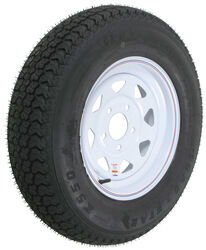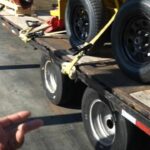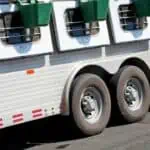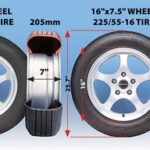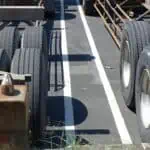When it comes to tires, there are a few things that you need to know in order to make the best decision for your car. One of the most important things to understand is the difference between D and R tires. D-rated tires are designed for use on passenger cars, while R-rated tires are meant for use on light trucks.
Both types of tires have their own benefits and drawbacks, so it’s important to choose the right type of tire for your vehicle.
There are a few key differences between D and R tires. D tires are designed for use on dry roads, while R tires are meant for use on wet or icy roads. D tires typically have a harder compound and more tread than R tires.
This means that they will last longer and provide better traction on dry roads. However, the tradeoff is that D tires will not provide as much grip on wet or icy roads. R tires, on the other hand, have a softer compound and less tread.
This makes them ideal for use in wet or icy conditions, as they will provide better grip. However, they will wear down faster than D tires on dry roads.
Radial vs. bias-ply trailer tires: What’s the difference?
Which is Better R Or D Tires?
There is no definitive answer to this question as it depends on a number of factors, including the type of vehicle you drive and your driving habits. That said, R-rated tires are generally designed for higher-performance vehicles and offer better grip and handling than D-rated tires.
Can You Mix R And D Tires?
It’s generally not a good idea to mix radial and diagonal tires on the same axle. Radial tires are designed with steel belts that run across the tread at a 90-degree angle, while diagonal tires have belts that run at a 30-45 degree angle. Mixing these two types of tires can cause problems with handling and stability, as well as increased wear and tear on the tires themselves.
Is D the Same As R in Tires?
No, D is not the same as R in tires. The letter designation on a tire’s sidewall indicates the load range or carrying capacity of the tire. In other words, it tells you how much weight the tire can safely carry.
“D” designates a tire with a standard load range, while “R” denotes a tire with an enhanced load range.
What Does D Mean on a Tire?
When you’re shopping for tires, you may notice a letter appearing before the size designation. For example, a common tire size is P215/60R16. In this case, the “P” stands for passenger car.
The other letters that can appear before the size are “LT” for light truck and “T” for temporary (spare) tires.
But what does the “D” stand for? You might see it on truck tires, in sizes like LT235/85R16 or LT265/75R16.
It indicates that the load range of the tire is different than what’s typically used on passenger cars. In other words, these are heavy-duty tires designed to carry more weight.
If you’re not sure which size or load range is right for your vehicle, be sure to consult with a professional tire dealer or mechanic.
They’ll be able to help you choose the right tires based on your specific needs and driving habits.
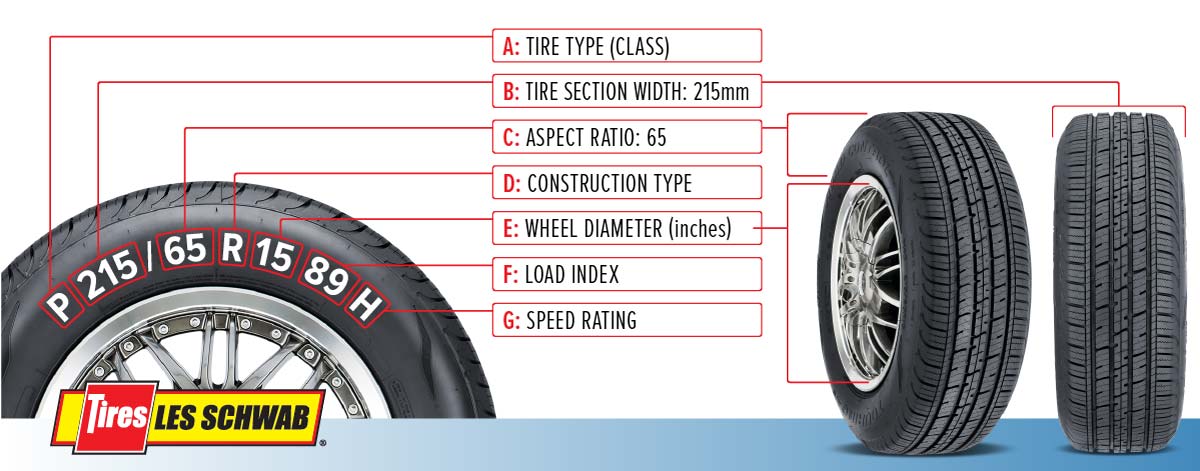
Credit: www.lesschwab.com
Is D Or R Better for Trailer Tires
If you’re shopping for new trailer tires, you may be wondering whether to choose those rated for “D” or “R” load ranges. Here’s a brief rundown of the differences between the two:
D-rated tires are designed for trailers that carry heavy loads on a regular basis.
They have thicker sidewalls than R-rated tires, which makes them better able to handle the weight and stress of constant use.
R-rated tires, on the other hand, are best suited for trailers that don’t carry as much weight on a regular basis. Their thinner sidewalls make them lighter and more agile, which is ideal for occasional use.
So, which one is right for your trailer? If you plan on using it frequently and carrying heavy loads, D-rated tires are the way to go. However, if you only need a tire for occasional use or lighter loads, R-rated tires will suffice.
Difference between D15 And R15 Tires
Different Types of Tires
Tires are one of the most important parts of your car. They provide traction, stability, and comfort while driving.
There are many different types of tires, each designed for a specific purpose. Choosing the right type of tire is important to ensure a safe and comfortable ride. Here is a look at the difference between D15 and R15 tires:
D15 Tires
D15 tires are all-season tires that are designed for use in both dry and wet conditions. They have a tread pattern that helps to evacuate water from under the tire to improve traction in wet weather.
These tires also have good tread life and provide a smooth, comfortable ride.
R15 Tires
R15 tires are summer performance tires that are designed for use in warm, dry conditions.
They have a more aggressive tread pattern than D15 tires to provide better grip on dry roads. These tires also feature reinforced sidewalls to improve handling and stability at high speeds. However, R15 tires do not perform as well in wet or cold weather and their tread life is shorter than D15 tires.
Ply Tires Difference
If you’ve ever wondered what the difference is between ply tires and regular passenger tires, you’re not alone. Both types of tires are made with multiple layers of rubber, but that’s where the similarity ends. Ply tires are designed for heavy-duty vehicles such as trucks and buses, while passenger tires are made for lighter weight vehicles like cars and SUVs.
Ply tires have a thicker layer of rubber than passenger tires, which makes them more durable and resistant to punctures. They also have a higher load rating, which means they can carry heavier weights without being damaged. Because of their construction, ply tires typically last longer than passenger tires – up to twice as long in some cases.
So if you’re driving a heavy-duty vehicle or one that’s carrying a lot of weight, it’s best to choose ply tires. And if you’re looking for maximum tire life, look for ones that are rated for high mileage.
What is the Difference between Bias And Radial Tires
There are many factors that go into choosing the right tires for your car. One of the most important decisions is whether to choose bias or radial tires. So, what is the difference between these two types of tires?
Bias tires are made with crisscrossed layers of fabric that run diagonally from one bead to another. The reinforcing belts are also arranged in a crisscross pattern. Radial tires, on the other hand, have layers of fabric that run perpendicular to the reinforcing belts.
Some people believe that radial tires offer a smoother ride because of their construction. However, bias tires actually provide better road contact because of their design. This can result in improved traction, especially in wet or icy conditions.
Bias tires may also last longer than radial ones since they don’t flex as much during use.
So, which type of tire is right for you? It really depends on your driving needs and preferences.
If you do a lot of off-roading or live in an area with harsh winters, bias tires might be the way to go.
St205/75R15
If you’re looking for a reliable and affordable tire for your RV or trailer, the ST205/75R15 is a great option. This all-season tire is designed for use on both paved and unpaved roads, and features a wide tread width that provides good traction and stability. The ST205/75R15 is also load-rated for up to 2200 pounds, making it a great choice for medium-duty applications.
Trailer Tire Difference
If you’re shopping for new tires for your trailer, you may be wondering what the difference is between trailer tires and regular passenger or light truck tires. The truth is, there isn’t a huge difference between the two. However, there are a few key factors that you should keep in mind when choosing tires for your trailer.
First of all, trailer tires are designed to carry a heavier load than passenger or light truck tires. This is because trailers often haul heavy loads, such as boats or RVs. As such, they need to be able to handle the extra weight without issue.
Secondly, trailer tires typically have a higher load rating than passenger or light truck tires. This means that they can safely carry more weight without becoming overloaded. Finally, trailer tires are usually made from tougher materials than passenger or light truck tires.
This helps them withstand the rigors of hauling heavy loads over long distances. Keep these factors in mind when shopping for new tires for your trailer. And be sure to consult with a knowledgeable tire professional to find the perfect tire for your needs.
How to Identify a Bias Ply Tire
Bias ply tires are those that have crisscrossed layers of fabric in the construction of their sidewalls. The advantage to this design is that it makes the tire more flexible, which gives it a better grip on the road. However, this flexibility also makes the tire more susceptible to punctures and other damage.
To identify a bias ply tire, look at the sidewall of the tire. If you see crisscrossed layers of fabric, then you have a bias ply tire. These tires are typically used on older vehicles or on off-road vehicles where their flexibility is an asset.
Types of Trailer Tires
There are many different types of trailer tires on the market. Each type has its own advantages and disadvantages, so it’s important to choose the right tire for your particular application. Here is a rundown of the most popular types of trailer tires:
Bias ply trailer tires are the most common type of tire used on trailers. They are made from two or more layers of fabric that are joined together with rubber. Bias ply tires are generally less expensive than other types of trailer tires, but they don’t last as long and can be more susceptible to flats.
Radial ply trailer tires are made from a single layer of fabric that is wrapped around a steel or nylon cord. Radial ply tires offer longer wear and resistance to flats, but they cost more than bias ply tires.
All-terrain trailer tires are designed for use on all sorts of terrain, including off-road conditions.
All-terrain trailer tires typically have deeper treads than other types of trailer tires, which helps them provide better traction in mud, sand, and other slippery conditions. However, all-terrain trailer tires can be more expensive and may not last as long as other types of trailer tyres on paved roads.
Whatever type of tire you choose for your trailer, make sure it is rated for the specific weight and load capacity of your vehicle.
Overloading your trailer can cause premature wear on the tyres and may even lead to a blowout while you’re driving!
Conclusion
Tires are the most essential part of a car and play a vital role in its performance. While there are many types and brands of tires available in the market, two of the most popular ones are D and R tires. Both these tires have their own set of features and benefits that make them ideal for different purposes.
D-type tires are designed for use on dry roads and offer good grip and traction. They also provide excellent handling characteristics. However, they tend to wear out quickly on wet or icy roads.
R-type tires, on the other hand, are made for use on all kinds of road surfaces. They have a deep tread that helps them grip well even on slippery roads. However, they may not provide as much traction as D-type tires on dry roads.
